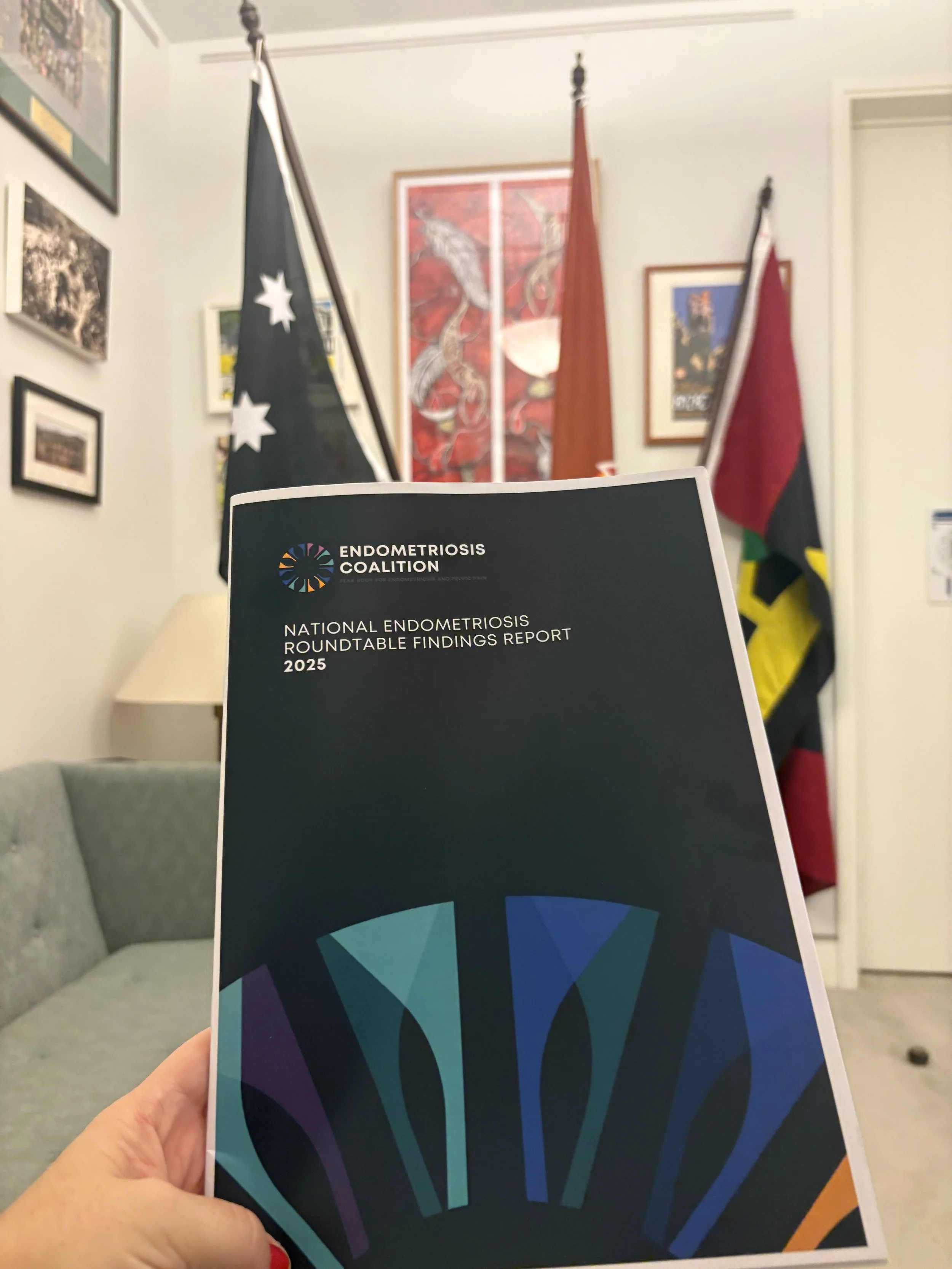Endometriosis
Fast Facts
Endometriosis is a whole-body disease.
It affects at least 1 in 7 Australian women, girls, and people assigned female at birth.
It’s more than just “bad periods.”
Symptoms can include chronic pelvic pain, painful sex, fatigue, gastrointestinal and bladder dysfunction, infertility, and more.Diagnosis takes far too long. The average time to diagnosis in Australia remains between 6–8 years, delaying vital care.
There is no cure—but there is treatment. Endometriosis often requires lifelong, multidisciplinary care.
New imaging breakthroughs are changing the game. Advances in specialist ultrasound techniques now offer increasing opportunities to detect and diagnose endometriosis without surgery. Ultrasound can “rule” endometriosis “in” to the diagnosis conversation, but not yet ready to “rule out” endometriosis.
Pelvic pain is never “just part of being a woman.”
Pain that interferes with your life is not normal and should be taken seriously.
Endometriosis is a complex, chronic, and systemic disease where tissue similar to the lining of the uterus grows in places it shouldn't—such as on the ovaries, bladder, bowel, diaphragm, and even lungs. This tissue can cause inflammation, scarring, and damage to organs, and does not behave like typical menstrual tissue.
While commonly associated with reproductive health, endometriosis is increasingly recognised as a whole-body disease that can affect multiple systems—not just the reproductive organs.
What is Endometriosis?
Everyone experiences endometriosis differently, but common symptoms include:
Chronic pelvic or abdominal pain
Painful periods (dysmenorrhea)
Pain with sex (dyspareunia)
Fatigue or exhaustion
Pain when going to the toilet
Bloating or gastrointestinal symptoms (sometimes called “endo belly”)
Difficulty conceiving or infertility
Back, leg, or nerve pain related to deep infiltrating disease
Some people have no symptoms at all—yet still live with the damage of the disease. Others may experience debilitating pain with no visible disease during surgery. Endometriosis is real, even when invisible.
Key Symptoms
Diagnosis Delays and Challenges
Despite growing awareness, it still takes too long to diagnose endometriosis. Most people experience symptoms for years, often since their first period, before receiving an accurate diagnosis.
Why?
Symptoms are frequently dismissed or normalised.
People often feel shame or embarrassment discussing pelvic pain.
There is still a lack of training and awareness across healthcare systems.
Diagnostic surgery may not be readily accessible.
Efforts across the sector are underway to reduce diagnostic delay and increase non-invasive diagnosis through specialist imaging and greater clinical awareness.
Historically, endometriosis could only be definitively diagnosed via laparoscopy. Today, skilled practitioners using advanced pelvic ultrasound can often detect signs of deep infiltrating endometriosis or endometriomas, offering earlier and less invasive diagnostic options.
However, not all forms of the disease are visible on imaging, and access to specialist sonographers remains inconsistent across Australia—especially in rural and regional communities.
There is no cure for endometriosis, but it can be managed.
Best practice involves:
Laparoscopic excision surgery by an experienced surgeon
Pelvic physiotherapy to manage pain and restore function
Pain management (both pharmacological and non-pharmacological)
Hormonal therapies, such as the pill or IUD, for some people
Dietary and lifestyle adjustments for symptom control
Psychological support for mental health impacts and trauma
Fertility support, when relevant
Endometriosis often needs a multidisciplinary team of gynaecologists, pain specialists, nurses, pelvic physios, psychologists, and dietitians to support the whole person.
Treatment & Management
Endometriosis is a Public Health Issue
Endometriosis is not just a women's health issue—it’s a public health and economic issue. It affects:
Education: Many students miss school from their first period onward.
Work: People with endometriosis may face missed career opportunities, lost wages, or job loss due to pain and fatigue.
Relationships: Pain, isolation, and shame affect personal and intimate relationships.
Mental health: Rates of anxiety, depression, and trauma are significantly higher in people with chronic pelvic pain.
At the Endometriosis Coalition, we believe:
Endometriosis must be recognised and treated as a chronic, systemic disease.
Early diagnosis and equitable access to multidisciplinary care are essential.
Research into causes, treatments, and quality of life impacts must be nationally coordinated and funded.
Education must begin early—in schools, workplaces, and medical training.
People with endometriosis deserve to be heard, believed, and supported.




